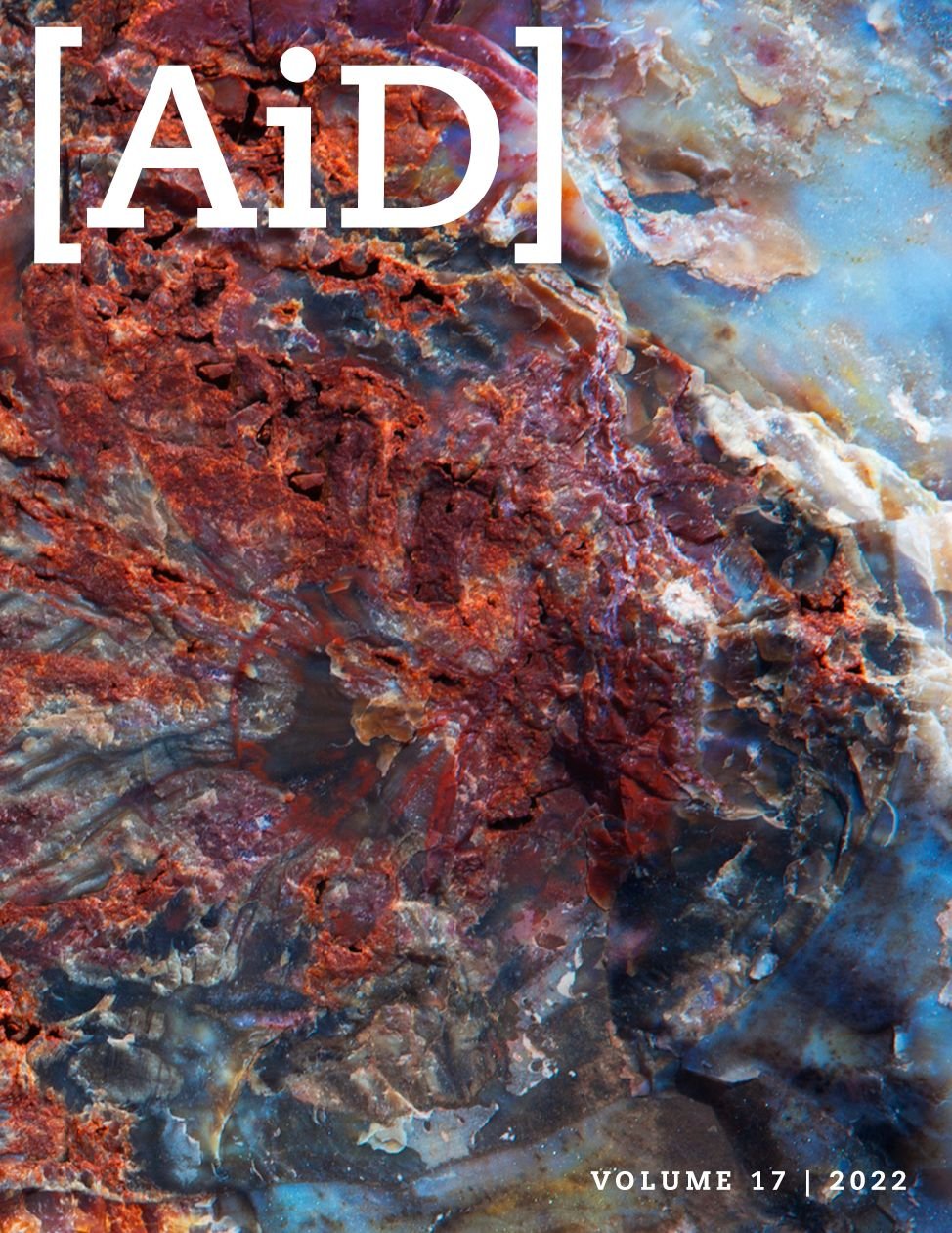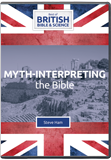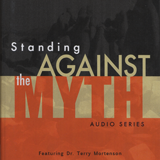
Creation Stories from Around the World
Ancient cosmogonies from Egypt, Japan, China, Vietnam, and Korea contrast with Genesis, which highlights the scientific plausibility of the biblical account.
Introduction
Critics of discussing the biblical account of creation in public schools in America often retort that creation should not be taught in government schools due to separation of church and state concerns. They add that if the biblical creation account is taught, then other religious versions should be able to be taught in government schools. This is actually an excellent idea for several reasons. First, it will help students appreciate other cultures; second, it will help them to realize that a chasm exists between all other creation accounts and the creation account taught in the Bible (Guthrie 1957). As Vienna-born biblical scholar Alfred Edersheim (1825–1889), who converted to Christianity from Judaism, concluded from his lifetime study, “It is scarcely possible to imagine a greater contrast than between the heathen accounts of the origin of all things and the scriptural narrative” that is recorded in Genesis (Edersheim 1995, 11). Other scholars concluded that,
In comparison to all other ancient cosmogonies, the historical accuracy and scientific plausibility of Genesis is striking. The radical thinking of its inspired author, Moses, is clear when compared to the far-fetched myths of the Mesopotamian cultures that surrounded the Israelites. It especially stands in stark contrast to the science and philosophy Moses learned in Egypt’s world-class educational institutions. (Whorton and Roberts 2008, 8)
One also notes that elements of many creation myths are, in several critical ways, very similar to those in Genesis (Von Franz 1995; and Hamilton and Moser 1988). One example is that most pagan creation myths begin with producing order (cosmos) out of disorder or chaos by intelligence or, in a few cases, by some ordering force (Leeming and Leeming 1994, 44).
One reason creation stories are universal is that people from every culture have wondered the same basic questions about life, such as, “Where did the universe and the earth come from?” “Why do we humans exist?” “How did we get here on earth?” “What is the end purpose of life?”
One reason creation stories are universal is that people from every culture have wondered the same basic questions about life, such as, “Where did the universe and the earth come from?” “Why do we humans exist?” “How did we get here on earth?” “What is the end purpose of life?” These questions have given rise to a broad variety of myths about creation in an attempt to understand our place in the world (Sproul 1979; and Zeitlin and Raschka 2000). As Whorton and Roberts wrote:
All nations and cultures share a common quest to understand where they came from. For this reason each culture has forged its own creation myth (cosmogony) to explain the origin of the universe, earth, and the human race. Records preserved from ancient times testify to the central role questions of origins play in establishing the identity and religious heritage of every nation. (Whorton and Roberts 2008, 8–9)
Once these core beliefs are disseminated throughout the populace, many of life’s vital questions are answered in the context of this basic foundation.
Although many similarities exist between the Genesis creation account and the world’s creation myths, numerous stark contrasts and exceptions also exist (Leeming and Leeming 1994). For example, a theme of many mythologies in numerous cultures, including those of Greece, Egypt, and Mesopotamia, involves primeval water as the lone element that existed in the beginning. From this primeval water, everything else in the universe was created. The source of this idea may have been inspired from the history of the creation as recorded in the Bible. One exception is that the basic first element of Chinese cosmology was “qi” or vapor, which was the life force that embodies the
cosmic energy governing matter, time, and space. This energy, according to Chinese mythic narratives, undergoes a transformation at the moment of creation, so that the nebulous element of vapor becomes differentiated into dual elements of male and female, Yin and Yang, hard and soft matter, and other binary elements. (Birrell 1993, 23)
Some examples of other creation myths which illustrate the chasm between Genesis and the pagan creation myths will be briefly discussed.
Egyptian Cosmogonies
Good examples of a “world creation” creation myth are those that originated in Egypt. Although only four different main creation mythologies existed in ancient Egypt, several common themes run through all of them. In the beginning, the only element that existed was a primordial ocean called Nu. From the waters of this ocean rose a hill on which a temple formed, and the
Creator of the world emanated (sprang forth) from this primeval, living temple . . . . He then brought into being all the various lesser gods of the atmosphere, earth, and sky through bodily emanations. It is as if he were budding off new divinities. (Whorton and Roberts 2008, 9)
This is a good example that shows one stark contrast with the Genesis account. The ocean created the creator god, who then created more gods. They, in turn, created the earth and all that was in it. How could an ocean create a god? Evidently, the ocean is a creator that is greater than the Egyptian creator god!
This is a good example that shows one stark contrast with the Genesis account. The ocean created the creator god, who then created more gods.
Another example is the Egyptian sun god Re. Although Re “ruled over the earth, where humans and divine beings coexisted” (Canadian History Museum n.d. a), his “eye” (see illustration) had a personality of its own. Furthermore, the sun god’s eye was the creator of humans.

The Egyptian god Re, the creator of humans, by Polyester via Wikimedia Commons.
Humans were created from the Eye of Re or wedjat (eye of wholeness). This happened when the eye separated from Re and failed to return. Shu and Tefnut went to fetch it, but the eye resisted. In the ensuing struggle, the eye shed tears from which humans were born. (Canadian History Museum n.d. b, 33)
This quote is from a teaching resource for use in Canadian government schools. The eye of Re is so important that it is often prominently featured in Egyptian art, drawings, and folklore. The Eye of Ra is the feminine counterpart to the sun god. The feminine Ra is a violent god that effectively subdues the sun god’s enemies against those persons that threaten the sun god’s rule. The eye is an extension of Ra’s power, which often behaves as an independent goddess. Actually, the Egyptians’ religion often referred to the sun and the moon as the “eyes” of particular gods.
In short, the sun is looking down at you, as is also the moon, watching you and what you do. Although they are aspects of the gods’ power, the eyes of Egyptian deities can behave as independent beings. The Egyptian sun god also dies each evening and spends the night in the underworld, but is reborn each morning (West 2014). The contrast between this view of creation and the Genesis account is obviously stark.
The Japanese Creation Myth
The main Japanese creation myth assumes a flat universe and teaches that the universe, in the beginning, consisted of some shapeless matter that first existed in a silent world similar to the so-called “chaos” or temporary lack of organization described in the Old Testament. Later, in the Japanese story, sounds were given off by the movement of matter particles. This movement caused the visible light, as well as the lightest particles, to coalesce.
The light that existed then was at the very top of the flat earth, and, below it, the solid particles formed first, then the clouds in the sky formed. Lastly, the heavens, which were called the Takamagahara, meaning the High Plain of Heaven, were formed (Wilds 2019). The particles then were not yet moving at the speed of light because they could not move up to the level of the light. The rest of the particles that had not risen formed a huge dense, dark mass that became the earth.
Genesis teaches that God spoke the universe into existence, but, in contrast, in the Japanese creation story, sound was the creator that created their god and most everything else.
Again, something physical, namely sound, created light, which evidently created everything else. Genesis teaches that God spoke the universe into existence, but, in contrast, in the Japanese creation story, sound was the creator that created their god and most everything else.
Chinese Creation Myth
Chinese creation myths cover the origins of the universe, earth, and life. Most early creation myths do not involve a god or deity or any other creator, but the world and humans originated spontaneously without a creator from “refined vital energy,” which was cosmic energy governing matter, time, and space. This energy, according to Chinese mythic narratives, undergoes a transformation at the moment of creation, causing the nebulous vapor elements to become differentiated into the dual elements of female and male, Yin and Yang, soft and hard, and similar binary divisions.
The Vietnamese and Korean Creation Myths
One common creation myth of the Vietnamese people details two progenitors, a man named the “Dragon Lord of Lạc” and a woman named the “Fairy Lady of Âu.” This couple produced a hundred eggs, fifty of which hatched, then they settled on the earth and eventually became the Vietnamese people. In short, a water dragon and a mountain fairy created the human race (Kalmusky 2018).
Among the elements shared by most Korean creation narratives include the episode involving two gods in a flower-growing contest to determine who will rule over the human world. The deserving benevolent god grows the superior blossom, but the evil god steals it while the good god is sleeping. As a result, the undeserving cheater becomes humanity’s ruler and spreads evil into the world (Walraven 2007, 244–258). In another pan-Korean episode, two suns and two moons existed, making the world unbearably hot during the day and intolerably cold at night. The benevolent god then destroyed one of each, making the days and nights far more tolerable.
Also popular are the creation narratives that depict the early universe as lacking a distinction between human and non-human domains, which were later separated (Park 1999, 78). One separation myth taught heaven and earth were tightly bound to each other. To force them apart, the god made heaven swell, and copper pillars were erected on the earth’s four corners to keep them apart. In another version, a heavenly brother and sister, Koh and Toh, come to the earth to make the sky and the earth. Koh’s sky is shimmering dark and Toh’s earth consists of patterns and colors. When they are done, Koh’s sky is too small for Toh’s earth, so he attempts to stretch the sky but that allows the clouds to escape. Toh then takes her needle and makes mountains, hills, and valleys so her brother’s sky fits perfectly. And that is how the earth was made (Day 2001).
Some Conclusions
The fact is, as stated by one scholar, often “opponents of the Christian faith assume that the biblical creation account is nothing more than yet another in a long line of such documents, in this case a Hebrew creation myth that sought to establish a preeminent place for Abraham’s descendants” (Whorton and Roberts 2008, 8). In fact, as documented in the few examples noted above, this claim is incorrect. Most creation accounts are not only unscientific, but nonsensical and in great contrast to the Genesis account, which makes no claims that anything created God or that he achieved his position since he is the only God and he pre-existed the creation.
References
Anne Birrell, Chinese Mythology: An Introduction (Baltimore, MD: Johns Hopkins University Press, 1993).
Canadian Museum of History. n.d. a. “The Creation Myth,” accessed February 2, 2022, https://www.historymuseum.ca/cmc/exhibitions/civil/egypt/egcr09e.html.
Canadian Museum of History. n.d. b. “Chapter 4: The Egyptian Religion and Creation Myth,” accessed February 2, 2022, https://www.historymuseum.ca/cmc/exhibitions/civil/egypt/pdf_eng/e-9802-c.pdf.
Nancy Day, Piecing Earth and Sky Together: A Creation Story from the Mien Tribe of Laos (Walnut Creek, California: Shen’s Books, 2001).
Alfred Edersheim, Bible History: Old Testament (Peabody, MA: Hendrickson Publishers, 1995).
Philip Freund, Myths of Creation (London: Peter Owen, 2003).
W. K. C. Guthrie, In the Beginning: Some Greek Views on the Origins of Life and the Early State of Man (London: Methuen Publishing, 1957).
Virginia Hamilton and Barry Moser, In the Beginning: Creation Stories from Around the World (New York: Harcourt Brace Jovanovich, Inc., 1988).
Katie Kalmusky, “Âu Cơ The Fairy Goddess: Mother of Vietnam’s People,” May 25, 2018, https://theculturetrip.com/asia/vietnam/articles/au-co-the-fairy-goddess-mother-of-vietnams-people/.
David Adams Leeming and Margaret Adams Leeming, A Dictionary of Creation Myths. (Oxford: Oxford University Press, 1994).
Park Jong-seong, Study of Korean Creation Narrative Poetry (Seoul: Taehaksa, 1999).
Barbara Sproul, Primal Myths: Creation Myths Around the World (San Francisco: HarperOne, 1979).
Marie-Louise Von Franz, Creation Myths (Boston: Shambhala Publications, 1995).
Boudewijn Walraven, “Creation of the World and Suffering”. In Buswell Jr., Robert E. (ed.), Religions of Korea in Practice (Princeton, New Jersey: Princeton University Press, 2007).
William West, The Egyptian Creation Story (Bloomington, Indiana: Xlibris, 2014).
Mark Whorton and Hill Roberts, Holman Quick Source Guide to Understanding Creation (Nashville, Tennessee: Holman Reference, 2008).
Kazumi Wilds, Kojiki: The Birth of Japan: The Japanese Creation Myth (North Clarendon, Vermont: Tuttle Publishing, 2019).
Steve Zeitlin and Chris Raschka, Four Corners of the Sky: Creation Stories and Cosmologies from Around the World (New York: Henry Holt and Company, 2000).
Answers in Depth
2022 Volume 17
Answers in Depth explores the biblical worldview in addressing modern scientific research, history, current events, popular media, theology, and much more.
Browse VolumeRecommended Resources

Answers in Genesis is an apologetics ministry, dedicated to helping Christians defend their faith and proclaim the good news of Jesus Christ.
- Customer Service 800.778.3390
- © 2024 Answers in Genesis




